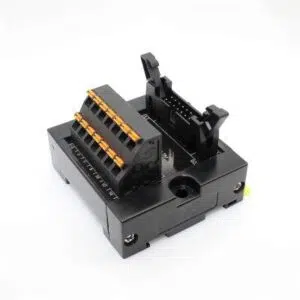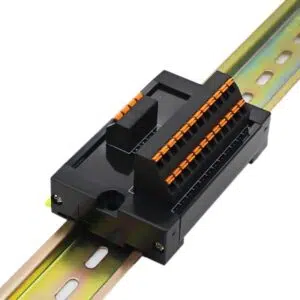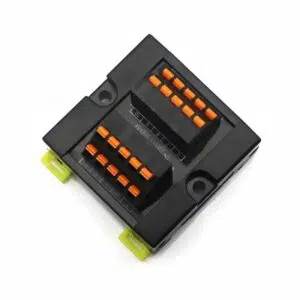Industry 4.0 advancement has made AI edge boxes core equipment for smart manufacturing and cities, delivering real-time processing and low-latency responses. Yet a critical question remains overlooked: how terminal blocks enable AI systems by providing the high-reliability connectivity these high-performance edge boxes fundamentally require.

In complex industrial environments, terminal blocks are working as an “invisible bridge” for signal and power transmission, directly determine the stability and safety of equipment operation.
Part1 : Typical application scenarios of AI edge boxes
Smart manufacturing production line
In automotive parts quality inspection, terminal blocks enable AI edge boxes to achieve accurate real-time defect analysis by ensuring stable signal transmission between high-speed cameras and processing units, eliminating false detection risks.Smart city traffic monitoring
Outdoor cameras use AI edge boxes to analyze traffic data, and anti-interference terminals ensure signal integrity in humid and high-temperature environments and reduce data packet loss.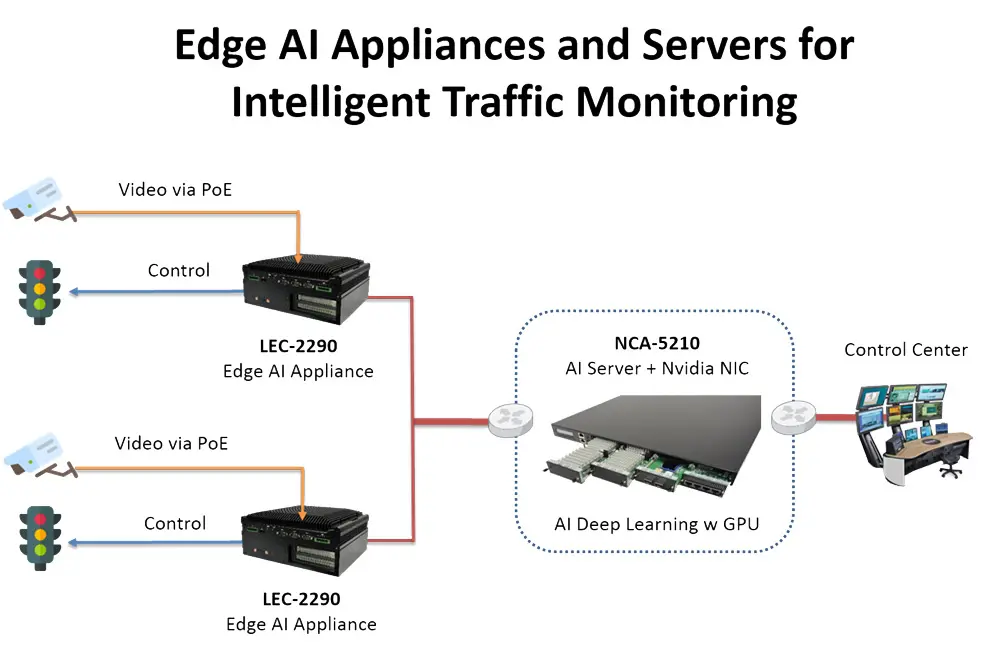
3.Energy management (photovoltaic power station)
Facing the demand for high-voltage current collection, high-temperature resistant terminals use high-voltage isolation design to prevent circuit short circuits and extend equipment life.Part2 : What is the core function of the terminal block in the AI edge box?
Function 1: Modular fast maintenance
The plug-in terminal block adopts a guide groove + snap-on locking design, which can quickly separate the terminal block from the female part without tools.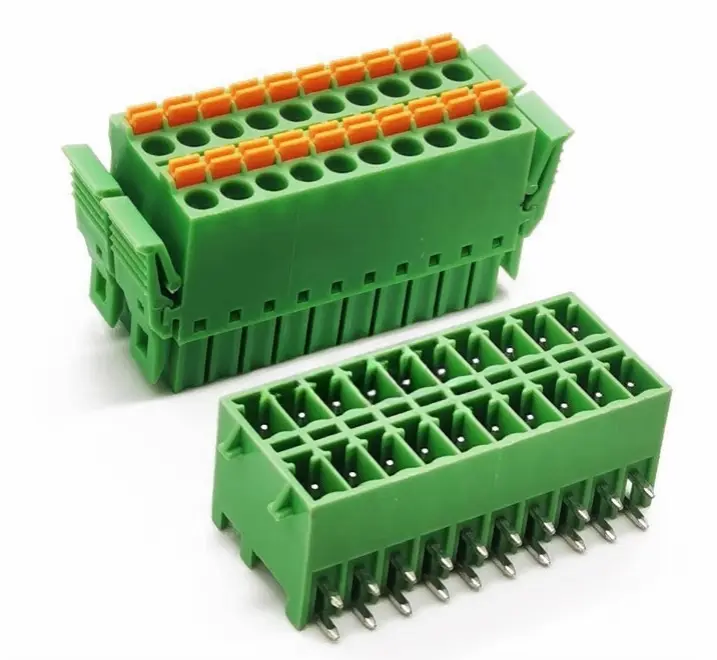
Application scenario:
When the AI edge box needs to be upgraded or replaced (such as factory algorithm iteration), the operator can directly unplug the old terminal module and replace it with a new module, reducing 90% of downtime.
Function 2: High-density space optimization
The plug-in terminal supports a double-layer stacking structure (such as 3.5mm pitch pluggable terminal block), and a single module integrates 24 signal channels to adapt to the miniaturization trend of AI edge boxes.
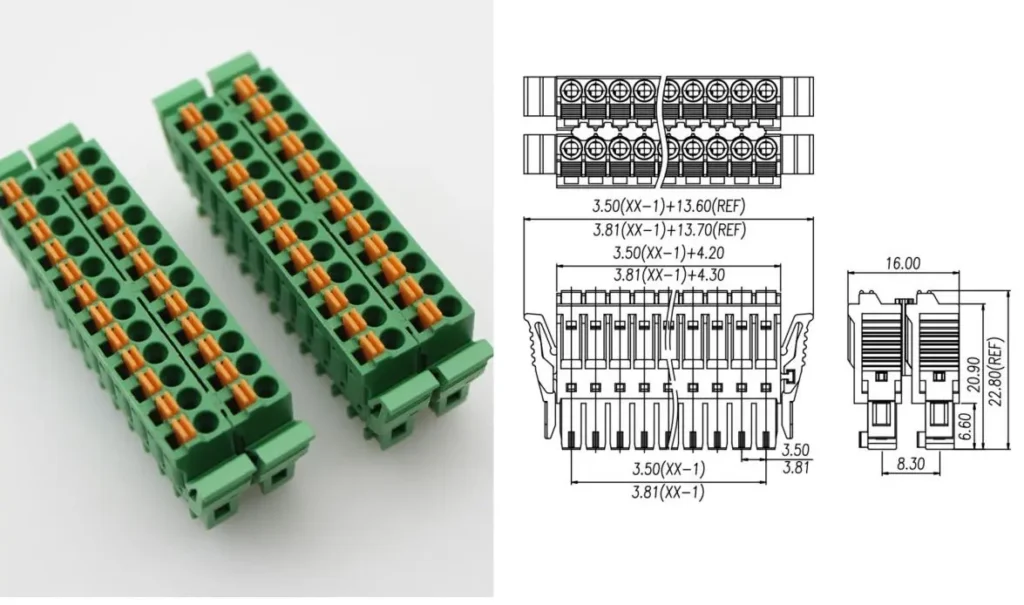
Application scenario:
Smart streetlight AI edge boxes integrate multiple cameras and environmental sensors, where compact plug-in terminal blocks enable AI by saving 60% space while preventing signal interference from tangled wiring.
Function 3: Anti-vibration and anti-mistake touch protection
Technical description:The plug-in terminal is equipped with a self-locking spring sheet and an anti-fool mark to ensure that the connector does not loosen in vibration scenarios such as rail transit, while avoiding the risk of reverse plugging.
Application case: After a subway intelligent monitoring system adopted plug-in terminals, the signal interruption failure rate caused by vibration dropped from 3 times per month to 0 times.
Part3 : How to choose the appropriate terminal block for the AI edge box?
1. Electrical Performance Matching
(1) Current and Voltage Levels
a. Low current signal transmission (such as sensor data): select 0.5~5A micro plug-in terminals (pitch 2.54mm). b. Power supply for high-power equipment (such as industrial cameras): 20~32A high current plug-in terminals (pitch 7.62mm) are required. Typical Case: The AI edge box of a photovoltaic power station needs to be connected to an inverter (30A output). Silver-plated contact <b>plug-in terminals</b> are used with a withstand voltage of 600V to ensure stable power supply under high-voltage environments. (2) Contact Material a. Gold-plated contacts: Suitable for high-frequency signal transmission (such as Gigabit Ethernet), impedance ≤3mΩ, to avoid data packet loss. b. Tin-plated contacts: Lower cost, suitable for low-speed signal scenarios such as temperature sensors.2. Environmental adaptability
IP67 protection level is selected for outdoor scenes, and vibration-resistant terminals are required for rail transit.3. Terminal block manufacturers recommend
| Brand/model | Advantages | Price |
|---|---|---|
| Weidmuller B2CF 3.5 | 5000 plug-in life, supports -40°C~105°C | high |
| WAGO 714-103 | P20 protection, tool-free installation | mid |
| Phoenix DFMC 1,5/12-STF-3,5 | 100% humidity resistance, IEC60664 certification | high |
| AOSI-Electronics FPS1.5-350-22 | High cost performance, 5000 plug-in life, CE certification | economical |
Selection recommendations
- Harsh industrial environment: Phoenix DFMC 1,5/12-STF-3,5 metal shielded female connector.
- Cost reduction for small and medium-sized projects: AOSI Electronics FPS1.5-350-22 composite female connector (High cost performance, support bulk bargaining).
Price influencing factors
- Contact plating: Gold plating is 30%~50% more expensive than tin-plated terminals.
- Certification requirements: UL/IEC certified terminals have a 20%~40% premium.
- Procurement scale: For orders of more than 1,000 pieces, AOSI Electronics can provide a 15% discount.
Conclusion
The intelligence of AI edge boxes relies on robust underlying components—terminal blocks enable AI systems by ensuring reliable connectivity, improving stability, and reducing long-term maintenance costs.
Contact us today for customized terminal block solutions that power your AI applications!

